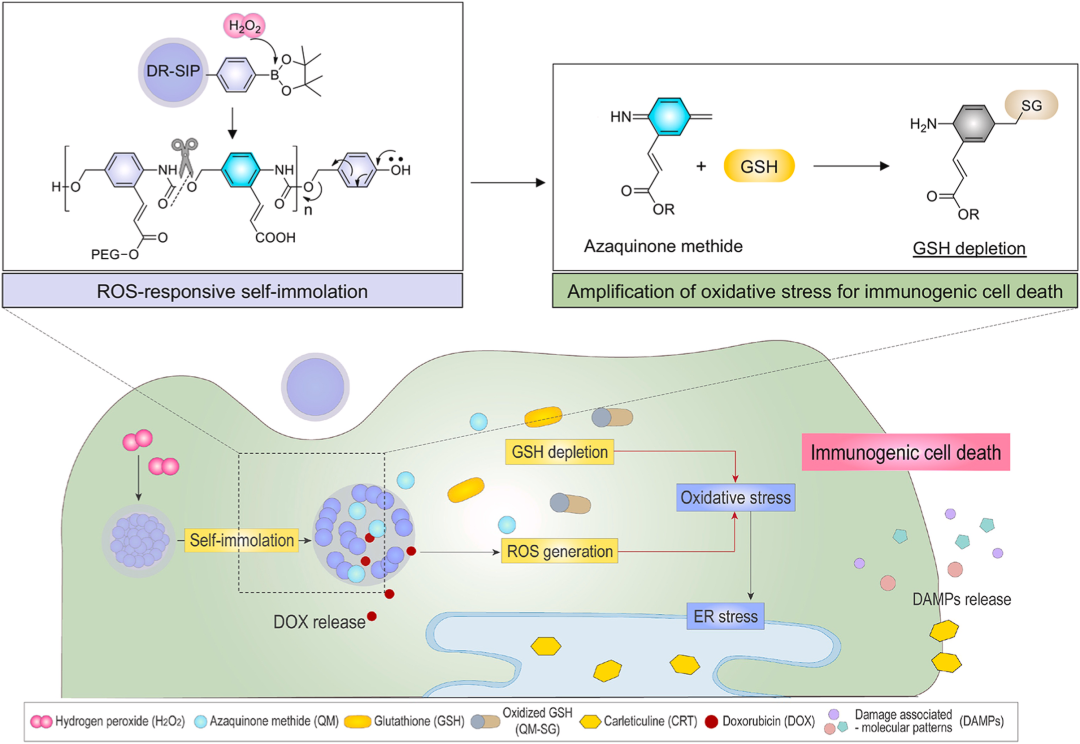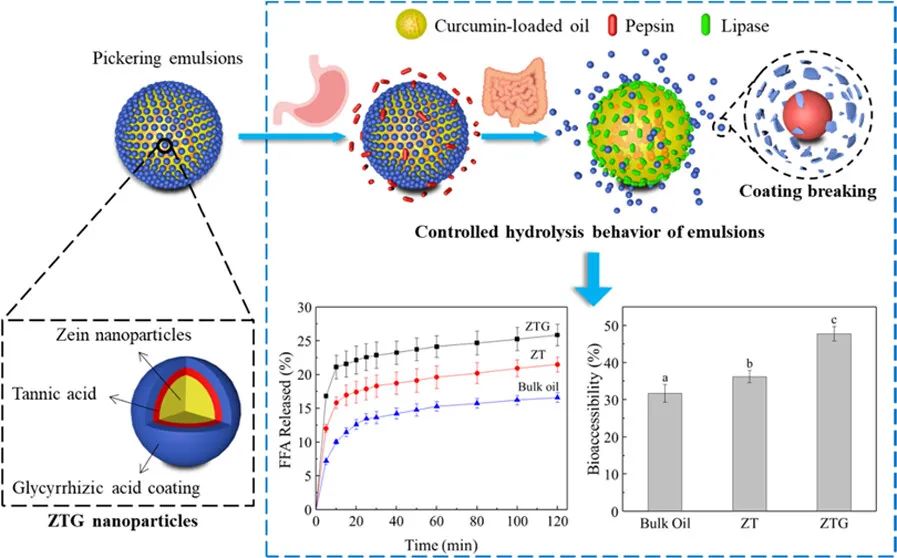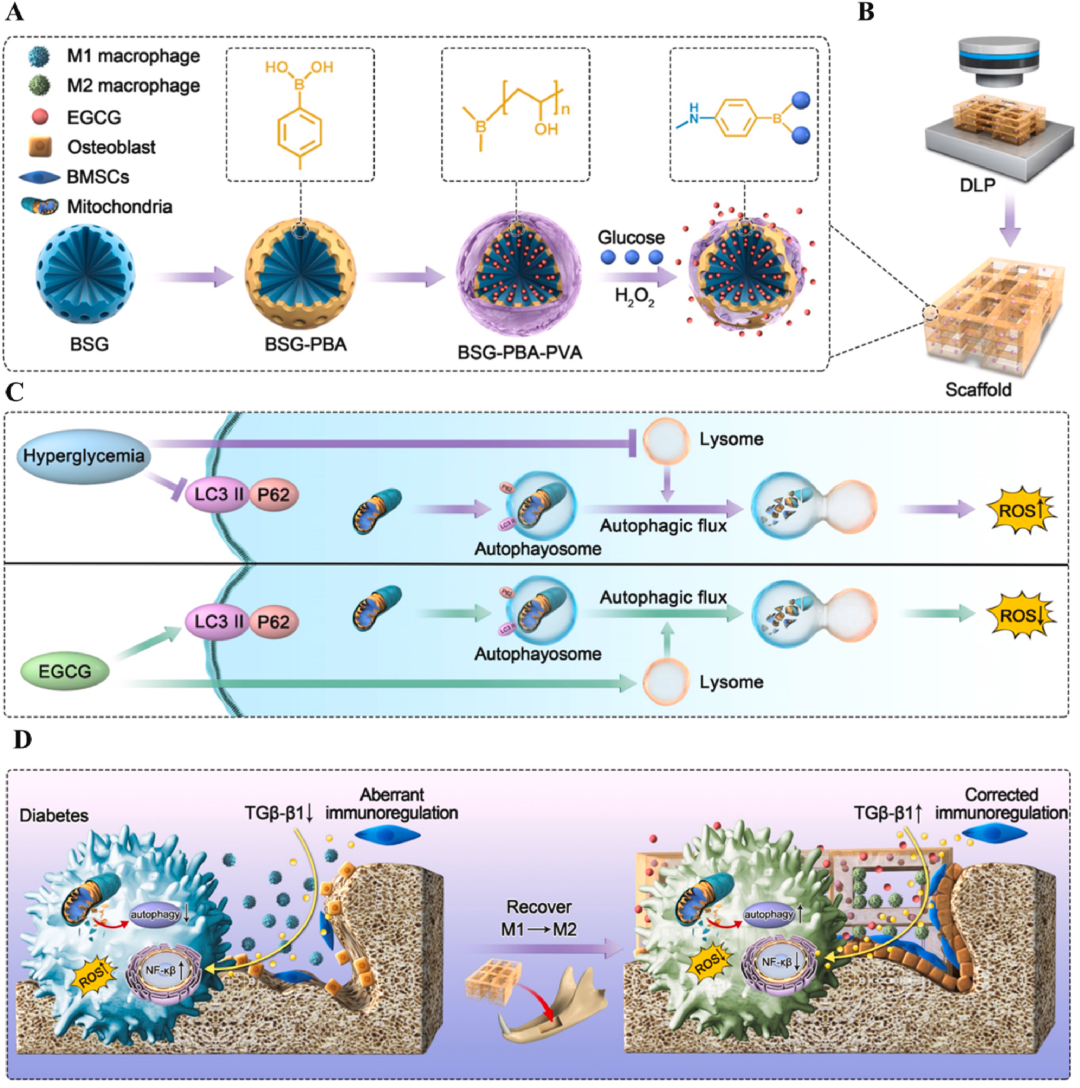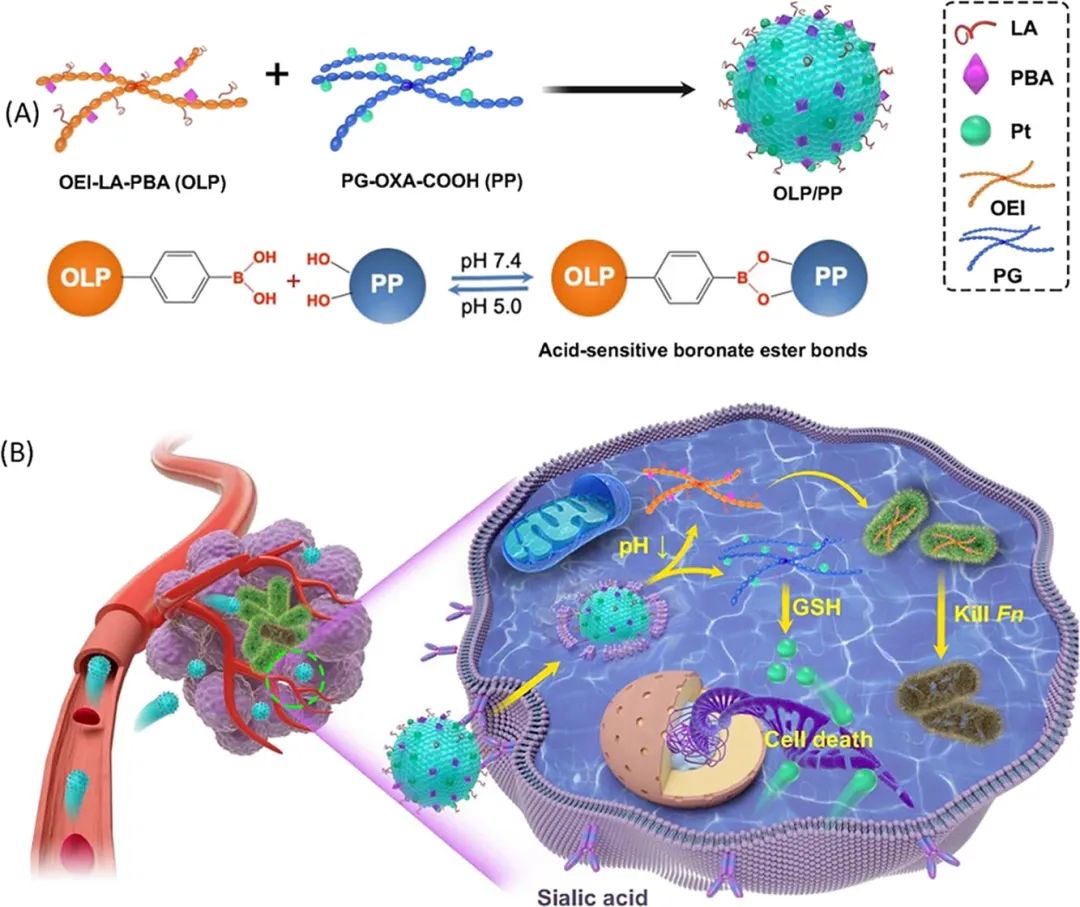pH and ROS dual-responsive nanomaterials: a nanocomposite with adaptive and targeting functions for tumor therapy
Tumor-targeted nanoassembly that enhances colorectal cancer therapy by eliminating intratumoral Fusobacterium nucleatum
Colorectal cancer (CRC) is a common malignant tumor of the digestive tract with high morbidity and mortality. Fusobacterium nucleatum (Fn) is a common oral anaerobic bacterium. It can promote the occurrence and metastasis of CRC through adhesion, invasion, regulation of immunity, and induction of genetic variation, and reduce the response of cancer cells to chemotherapy drugs. It is closely related to the occurrence and development of colorectal cancer (CRC). Studies have found that Fn can promote the formation and progression of colorectal tumors through multiple mechanisms, and affect the sensitivity of cancer to chemotherapy drugs. Therefore, how to effectively clear Fn in tumors and overcome chemoresistance is an important issue in the prevention and treatment of CRC. To enhance the therapeutic effect of cancer, an active nanomaterial capable of targeting tumor acidity and eradicating Fusobacterium nucleatum (Fn) within tumors was developed. OLP was first prepared by linking lauric acid and phenylboronic acid to oligomethyleneimine, which was then combined with polyglycidyl ether (PP) modified with oxaliplatin precursor to obtain OLP/PP nanoassemblies. The nanoassembly has good stability under simulated physiological conditions and can release drugs under acidic conditions in the tumor microenvironment. More importantly, the nanoassembly can specifically recognize tumor cells and promote cellular uptake, thereby effectively removing Fn inside and outside the tumor. In this way, the nanoassemblies were able to overcome chemoresistance and significantly inhibit tumor growth. Both in vitro and in vivo experiments demonstrated the biocompatibility of the nanoassemblies. Therefore, this biocompatible nanoassembly with highly effective antibacterial and antitumor functions provides a new strategy for the treatment of Fn-infected tumors.
Glucose-responsive nanoplatform for diabetes treatment
Engineered sugar nanoparticles enable rapid and sustained delivery of glucose-responsive insulin in diabetic mice
An innovative nanocomposite enables glucose-sensitive and persistent insulin delivery for effective diabetes treatment. The nanocomposite consists of two different nanomaterials, one is a polymer nanoparticle used to encapsulate insulin, and the other is a metal organic framework nanoparticle used to control insulin release. With a single subcutaneous injection, the nanocomplex rapidly adapted to changes in blood glucose levels and maintained optimal blood glucose management (less than 200 mg/dL) within 13 hours in two different diabetic mouse models. The study found that the morphology and structure of the nanocomplex are very important for achieving glucose feedback regulation of insulin delivery in vivo. The nanocomplex showed efficient insulin release, good bioavailability, excellent pharmacokinetics, and safety both in vitro and in vivo. These results demonstrate an effective strategy to construct a glucose-responsive insulin delivery system using natural and biodegradable nanosaccharides.
ROS-responsive polymer encapsulated DOX
Self-destructing polymer immunogenic cell death inducers for regulation of redox homeostasis

Reactive oxygen species (ROS) are a class of highly active oxidative molecules that participate in many important physiological and pathological processes in organisms, such as cell signal transduction, immune response, inflammation, and cancer. ROS-responsive polymers (R–SIPs) are a class of stimuli-responsive polymers that can sense and respond to changes in ROS levels, and they can adjust their structure, properties, and functions according to the ROS concentration, enabling applications such as smart drug delivery, bioimaging, and biosensing. R–SIP is usually composed of monomers or polypeptides containing thioether groups, which can undergo cleavage or exchange reactions under the oxidation of ROS, resulting in changes in the water solubility, charge, hydrophilicity and hydrophobicity of the polymer. R–SIP can be prepared by different methods, such as free radical polymerization, ring-opening polymerization, condensation polymerization, enzyme-catalyzed polymerization, etc. R–SIP can form nanomaterials with different morphologies through self-assembly, such as micelles, nanoparticles, nanofibers, hydrogels, etc. These nanomaterials could be used to encapsulate and protect drugs or imaging agents and release them at sites of elevated ROS levels for targeted therapy or imaging. R–SIP has broad application prospects in tumor therapy, because the ROS levels in tumor cells and tumor microenvironment are usually higher than normal cells and tissues, which provides an effective stimulating signal for R–SIP. R–SIP can inhibit tumor growth and metastasis by releasing anticancer drugs, inducing tumor cell death, and activating the immune system.
Glycyrrhizic acid-encapsulated curcumin pH response
Gastrointestinal pH-sensitive Pickering emulsion stabilized by zein nanoparticles coated with bioactive glycyrrhizic acid for improved oral bioaccessibility of curcumin

To achieve gut-targeted curcumin delivery, a pH-responsive nanocomplex based on glycyrrhizic acid and tannic acid was developed. Glycyrrhizic acid (GA), a natural organic acid extracted from licorice, has anti-inflammatory, antioxidant and antitumor activities. Tannic acid (TA) is a polyphenolic compound extracted from plants, which has functions such as antibacterial, antioxidative and crosslinking effects. Zein nanoparticles are a kind of biodegradable nanocarriers prepared from zein, which have good biocompatibility and drug loading capacity. Curcumin is a polyphenolic compound extracted from turmeric root, which has various pharmacological effects such as anti-inflammatory, anti-oxidation, and anti-tumor. Taking advantage of the pH responsiveness of glycyrrhizic acid and the cross-linking effect of tannic acid, zein nanoparticles and curcumin were complexed together to form zein/TA/GA nanoparticles (ZTGs). ZTGs have good stability under acidic conditions (such as gastric juice) and will not release curcumin; however, under neutral conditions (such as intestinal juice), they will undergo structural changes to release curcumin and achieve intestinal targeted delivery. ZTGs can improve the solubility, bioavailability, and therapeutic effect of curcumin, providing a novel nano-drug carrier for the treatment of gut-related diseases.
Glucose and hydrogen peroxide dual responsive borosilicate glass (BSG) scaffold for alveolar bone treatment
Dual-stimuli-responsive borosilicate glass (BSG) scaffold promotes diabetic alveolar bone defect repair by modulating macrophage phenotype

Alveolar bone regeneration remains a clinical challenge, especially in concomitant diabetes, which leads to metabolic derangements with a long-term low-grade inflammatory phenotype. Thus, spontaneous regulation of cellular functions, which are largely disturbed by persistent inflammation, is difficult to predict.
To promote the regeneration of diabetic alveolar bone defects, a glucose- and hydrogen peroxide dual-responsive borosilicate glass (BSG) scaffold based on epigallocatechin gallate (EGCG) was developed, which can synergistically regulate the abnormal inflammatory response at the alveolar bone defect site. EGCG is a natural polyphenolic compound extracted from tea leaves, which has various biological activities such as antioxidant, anti-inflammatory, and anti-tumor. BSG is a bioactive and degradable inorganic material that can be used as a carrier for drugs or growth factors. The researchers encapsulated EGCG in BSG scaffolds to form EGCG-BSG composite scaffolds, which can regulate the release rate and amount of EGCG according to the levels of glucose and hydrogen peroxide, thereby realizing intelligent adaptation to the inflammatory environment.
18915694570
Previous: Nature: Hydrogels for
Next: 《Nature》Biomimetic pro



